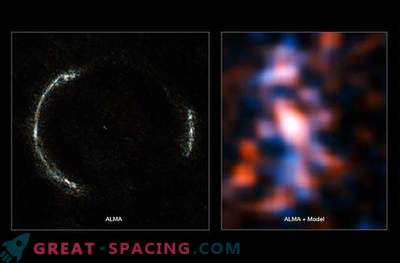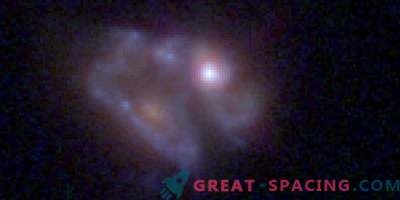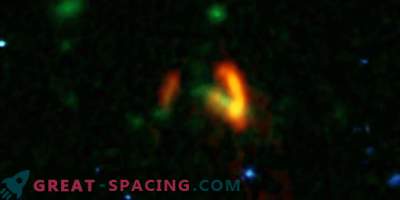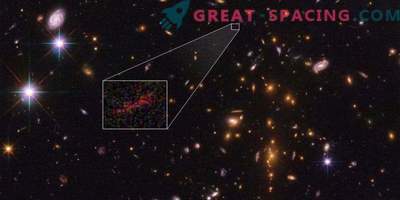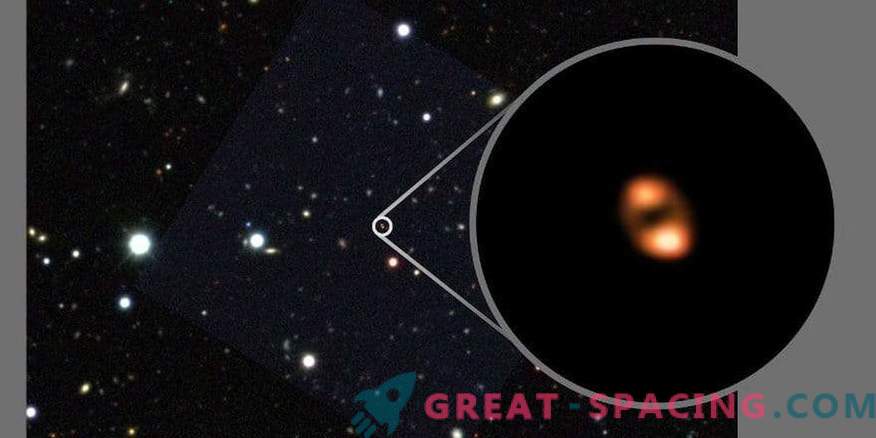
ALMA with the help of a gravitational lens managed to display the outflow from the galaxy in the observation when the Universe reached only 1 billion years old. The image shows the location of hydroxyl molecules ( OH). These molecules track the location of the gas from a stellar birth, which is pushed out of the galaxy due to a supernova or black hole wind. The star field indicates a galactic location
For the first time in a galaxy distant by 12 billion light years, it was possible to fix a powerful “wind” of molecules. This is the period when the Universe has reached less than 10% of modern age, which allows us to study how early galaxies controlled stellar birth, so as not to swell.
Some galaxies, such as the Milky Way and Andromeda, have relatively slow birth rates, with one star occurring each year. Others (star galaxies) produce hundreds and even thousands of new objects annually. But such a rapid pace will not be able to stimulate endlessly. To avoid burnout, some have to hold back the runaway stars, pushing (at least temporarily) large amounts of gas into large-scale halos, where it fully or partially returns to the galaxy, which leads to a re-burst of stellar birth.
The problem is that so far it has not been possible to directly observe these powerful outflows in the early Universe, where such mechanisms are necessary for galaxies to rapidly grow. New observation in ALMA for the first time displays a powerful galactic wind of molecules, when the age of space has reached only 1 billion years. Astronomers have observed winds of the same size, speed, and mass in neighboring galaxies, but the ALMA survey is the most distant outflow.

Artistic vision of the outflow of molecular gas from an active stellar galaxy
Galaxy SPT2319-55 removed by 12 billion light years and opened by the National Science Foundation of the South Polar Telescope. ALMA watched the object at a great distance with a gravitational lens (another galaxy). This effect is created by the bending of light due to gravity, due to which distant objects are focused and increased. Then connect special computer programs that restore the image after the work of the space lens.
Thus, it was possible to see the wind of a star formation gas emerging from the galaxy at a speed of 800 km / s. The outflow was recorded with a millimeter-length signal of a hydroxyl (OH) molecule. In essence, molecular winds are a galactic way to regulate growth on their own. They are caused by an explosion of supernovae or a powerful release of energy from a supermassive black hole.

